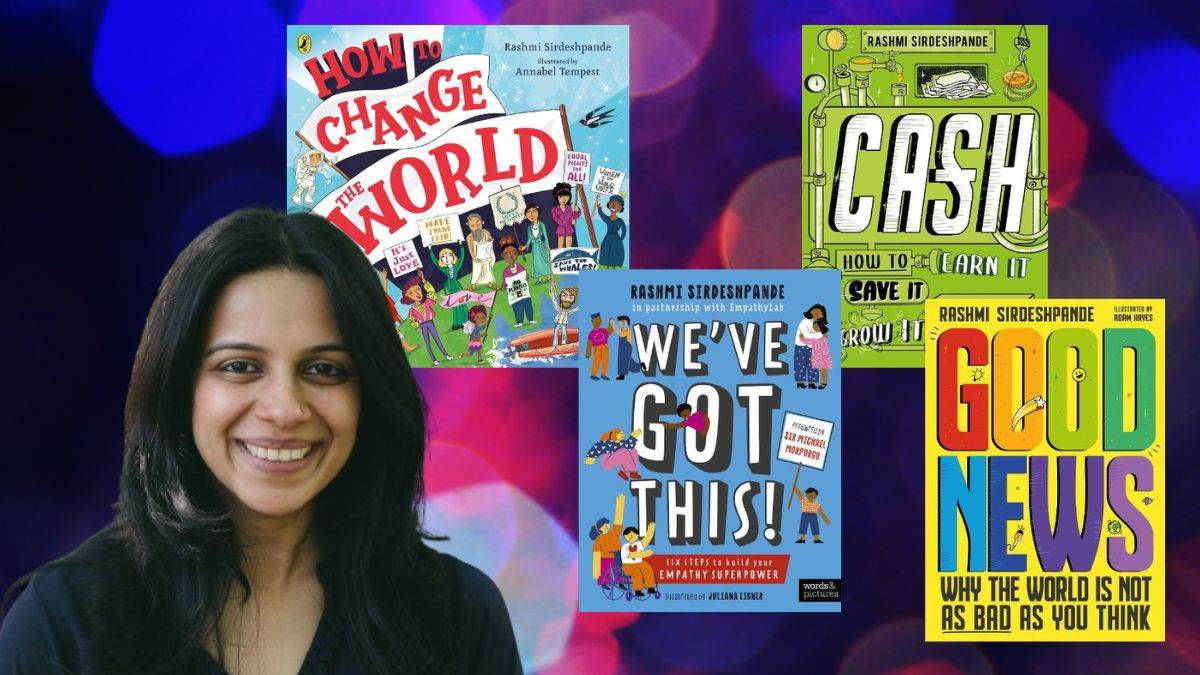How non-fiction is a powerful form of storytelling that can grip child readers
Published on: 20 March 2024
BookTrust Writer in Residence Rashmi Sirdeshpande explains why non-fiction is so crucial to share with children.

Before I talk about the wonders of non-fiction, let me get one thing straight. I’m not in love with the term “non-fiction” and I only use it interchangeably with “factual books” because it means something to people.
Here’s my thought process: how can you reduce such a fantastic category of books into a name that essentially means “stuff that is not fiction”? To me, it seems that often fictional stories are seen as somehow superior – that non-fiction is just a gateway into reading the real stuff.
Now, I’ve got nothing against fiction. In fact, I love it. I write it too! But factual books are so much more than a gateway into reading fiction. They’re an incredible thing in themselves. And while their accessible structure that lets you dip in and out means that factual books absolutely can and do draw in reluctant readers (another term I’m not 100% sure about!), they’re enjoyed by avid readers too.
Factual books are ultimately another form of storytelling.
Some stories are completely made up. But some stories are true stories, based on facts and the reality of the world we live in. They draw on all kinds of themes from history, art, science and nature to navigating the news and relationships and breaking down big ideas.
And we live in an age where these books are filled with captivating writing, stunning art, and some truly fresh takes on fascinating topics. It’s all storytelling. Using words and pictures.
We humans have been telling stories since forever.
The earliest art we’ve come across tells a story about the magnificent creatures we encountered and the lives we lived. It talks about our heroes. Our greatest challenges. Big moments in history.
These true accounts and perspectives are captured in art, in poetry, and in stories passed down generations across the planet. They tell a tale about how wondrous our world is and what we’re fighting to protect. True stories hooked us then and they can hook young readers today just as much as fiction can.
In our heart of hearts, we know this. We’ve all been taken in by a true story. At some point, we’ve all wondered at something, and that state of wondering has unfolded into all kinds of questions. Questions such as these:
- What happened?
- How?
- WHY?
- How does that work?
- How is that even possible?
- What would it be like to travel the world?
- What would it be like to go back in time?
- Is there life on distant planets?
- How did we end up where we are?
- What will the future look like?
Factual books answer these kinds of questions and many, many more. Fictional stories can grip a reader – of course they can. But so can true stories. I’ve seen readers so deep in reading factual books that they find themselves lost within those pages. They’re curious. They’re hungry to learn more. And they’re often bursting to talk about and share the things they’ve discovered.
Just imagine this beautiful chain of knowledge – fascinating facts passed from one person to another. And just like that – the reader becomes the storyteller.
This is the power of factual books. They grip readers, they encourage curiosity, a love of reading and learning, and they spark a desire to share and pass on knowledge. If nurtured, these are qualities that can last a lifetime.
Watch out for Rashmi’s recommendations of brilliant non-fiction over the next few months. In the meantime, check out BookTrust’s suggestions here:





